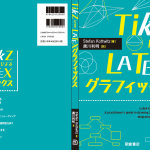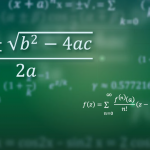This year’s TUG conference, the 32nd annual meeting of the TeX Users Group, was held in Thiruvananthapuram aka Trivandrum, Kerala, India. It focuses on document production using TeX, LaTeX, ConTeXt, MetaPost, and related software and this year it’s hosted by River Valley Technologies.
As I’m a TUG member and very interested in the conferences, I registered, booked flights and hotel, both sponsored by Stack Exchange, got a visa for India, and now I’m here at Thiruvananthapuram.
I’m staying at the Somatheeram Ayurveda Resort, a very nice place with a great view to the beach, most other delegates are in the neighboring Manatheeram Resort.
The Attendees
Fifty participants have been registered. According to the list, twenty-three come from India, the others from various countries. Four, including me, came from Germany. Many names of attendees are well known because of their activities in the TeX world and in the TUG, and many have been on TUG meetings before. For me, it’s the first time.
The Conference Venue
The meeting was held at the River Valley Technologies campus. Originally it has been planned to make it in the open air, under a traditional thatched roof made of coconut trees leaves. However, it finally moved to the indoor conference hall, which has been fully air conditioned. It seemed to be the better choice, because even with ventilation fans below the roof it got very hot outside during the day. We used that place though for occasional chats outside, especially before and after lunch. For lunch we used a big marquee outside, with traditional Indian food on a buffet.
In the conference hall power sockets were provided at each place and WiFi has been available, projector and microphones could be used by speakers. Three video cameras pointed to the speaker’s place and at the screen, for live broadcasting and video recording. The presentations are planned to be available on river-valley.tv after the conference.
A complimentary shuttle service has been provided between the hotel and the conference venue. The transfer took about 45 minutes from the hotel where most participants were booked in.
The Program
The schedule for all three days is similar: a morning session with four talks and a break in between, and an afternoon session of four talks and a break within.
Barbara Beeton opened the meeting with some welcoming words, then Ross Moore followed with his presentation “Further advances toward Tagged PDF for mathematics”. He explained to us, what tagged PDF is and for what it’s used, especially for enhanced accessibility. He demonstrated it by showing a math text in tagged PDF format, which has been read out loud by his computer, even complex formulas were well understandable regarding their structure. It was very impressive. This voice rendering can be very useful to the visually impaired. Ross merged TeX code and MathML description for that, which can be done automatically. Though it’s a very complex task, as I understood when I saw the complexity of his program flow, the tree of tags in such a PDF file and the XML sources. It hasn’t been done in TeX before, possibly because tagged PDF format is not commonly required by publishers, but this might change in the future.
In the next talk “Creating magical PDF documents with pdfTeX” Rishi showed us how to work with layered PDFs. These are composite PDF files, useful for example for copy-editing, because you can switch between different versions of a document while looking at the same place of the PDF file. Further he showed using tool-tips for copy-edit changes, citations, tables figures. It’s impressive when you move the mouse over a cross-reference, and the corresponding figure or table pops up and closes if you move the mouse away.
After a break with coffee and tea, CV Radhakrishnan presented “TeX4ht – A Swiss army knife for TeX”, a sophisticated tool for converting TeX to HTML and XML including MathML. Examples of use are conversion to MediaWiki, MathJax, Braille, voice rendering or degrading LaTeX macros. There are different approaches: parsing LaTeX and writing XML is done by LaTeX2HTML, LaTeXML and Tralics, another one is creating variant markup which can be post-processed for example by XLST which creates either XML or LaTeX. TeX4ht makes it differently: during typesetting it injects XML elements via DVI \specials for post-processing of the DVI files. By using the TeX compiler for conversion even complex author macros can be processed, which could be a problem when converting directly from a LaTeX source. He explained hooks which TeX4ht provides for most LaTeX commands, such as at the beginning and end of sections and of their titles, respectively, and spoke about hypertext fonts (HTF).
Karel Skoupy talked about TeX as a programming language, specifically about “Data structures in eTeX”. He spoke about implementing and using records and objects, with an outlook to sort of reusing and inheriting, namespaces, and to virtual methods and multiple inheritance. The question may be, why not using another capable programming language and combining it with TeX, however doing this in TeX seems to fun.
Then we had lunch, which was of great qualiy, at the campus outside, also a nice opportunity to discuss the talks.
Kaveh Bazargan talked some minutes about “Why TeX is more relevant now than ever”, showing that even at times of WYSIWYG word processing, mark-up and sources are very important today, in times of HTML and XML and TeX markup is still outstanding, especially because of its readability compared to XML mark-up.
Alan Wetmore explained in “e-Readers and LaTeX” the functionality and usage of various ebook reading devices and discussed pros and cons of epub and PDF format. He showed ways for using LaTeX for e-reader output, solving problems with white space and reflowing, which he demonstrated on readers via a projector.
Boris Veytsman presented “Ebooks and paper size: Output routine hacking made easy”, which dealt with producing output for an ebook reader. Following the question, which features one should copy from books, and which not, he intended to avoid page breaks for simply reading like on a vertical scroll. So we don’t have page breaks, which means: no dealing with floating objects, no widows, no orphans! Why on earth should we “turn a page” on a reader device instead of simply scrolling down and down? His approach is implementing a variable paper size in TeX and in LaTeX. He showed the sources of easy hacks to the output routines, by manipulating \pdfpageheight in TeX or using everyshi and \EveryShipout with LaTeX. A somehow open question remained regarding what to do with folios resp. page numbers and how to deal with footnotes then.
The last talk “Automated generation of epub from LaTeX” was again done by Rishi, a demonstration of tools and work-flow for converting TeX to structured TeX and XML via TeX4ht and then to PDF or epub.
Afterwards a bus took us back to the hotels. Time for relaxing or for reviewing today’s topics – and for writing to the blog.


